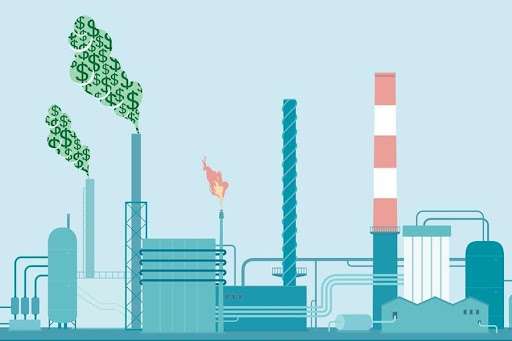
Several governments impose a carbon tax on industries and businesses for the carbon dioxide they release into the air through their operations. The carbon tax aims to discourage companies from spewing greenhouse gases and carbon dioxide into the atmosphere, thus protecting the environment. It has gained popularity with many countries that want to correct climate change and its effects on the planet.
Currently, there is no universal definition of what carbon tax or environmental tax entails. However, many people associate carbon tax with any tax linked to environmental good even though some of these levies have no environmental motivation. There are ongoing liberations whether to distinguish environmental taxes aimed at saving the environment and those aimed at collecting revenue. Carbon or environmental taxes include taxes on pollution, energy, resource extraction, and transport.
Understanding Carbon Tax
Carbon dioxide is the major component of greenhouse gases that have contributed to global warming. Several operations involving hydrocarbon fuel, such as petroleum, natural gas, and coal, produce carbon dioxide in large quantity when they are burned. These gases form a blanket-like cover in the atmosphere, thus trapping heat within the earth’s domain, contributing to climate change and global warming with dire consequences to humanity. A carbon tax is designed to remove or reduce the adverse effects of carbon emission; therefore, it acts as a Pigouvian tax.
Carbon taxes can also be considered excise taxes that the government imposes on the production process or the product emitting carbon into the environment. The taxes can be levied at the production stage, importation, or during purchases. The exercise duty is the most popular form of a carbon tax because they are simple to understand and easier to administer. Some tax authorities levy this tax as a percentage of the product’s final price, like the tax on petrol that car and machine owners pay whenever they buy fuel.
Additionally, it can also be levied based on the weight of the polluting substance or price per volume, a criterion that many states and governments are adopting to levy a carbon tax. The governments intend to influence people’s behavior and discourage them from consuming polluting substances as the taxed products go up. Carbon taxes are also imposed on companies extracting, importing, and using gas, crude oil, or coal based on the carbon content of their source of fuel. The prices of fuels and energy from fossil sources will rise due to these taxes. Theoretically, this is meant to discourage the consumption of fossil fuels, encourage migration to cleaner sources of energy and promote energy efficiency. Many states also hope that carbon taxes will encourage companies to consume natural gases and diesel alternatives, thus reducing pollution.

Types of Carbon Pricing
There are two types of carbon pricing: carbon taxes and emissions trading systems (ETS).
ETS
The ETS objective is to promote the reduction of emissions by keeping major emitters within the pre-allocated carbon budget. It is sometimes called a cap-and-trade system that caps the total level of GHG emissions, allowing industries emitting few poisonous gases to sell their allowances to industries emitting large quantities of GHG. This way, the ETS is creating demand and supply for emission allowance and a market price for GHG emissions.
Carbon Tax
As already discussed, carbon tax sets the carbon price as a tax rate on GHG emissions or as a percentage of the carbon content of a company’s fuel source. The carbon tax does not pre-define its reduction outcome, but it dictates the carbon price based on the type of fossil fuel used.
The type of instrument the state or government will adopt is often dependent on economic and national circumstances. Some tax authorities also indirectly impose carbon tax through fuel taxes, regulations dictating carbon’s social costs, and the elimination of fossil fuel subsidies. Additionally, a carbon tax can also be imposed through buying emission reductions, where governments and private entities buy emission reductions to cover their excess GHG emissions. This money is often used to support pollution mitigation programs through result-based finance. Over 40 nations and 20 states, cities, and provinces have implemented carbon pricing mechanisms, with more others planning to embrace the tax.
Other Policies Approaches Intended to Reduce Carbon
Though carbon tax is the most renowned taxation mechanism targeting CO2 emissions, several other ideas have dominated international debates in the recent past, as discussed below:
Carbon Added Tax (CAT)
This type of taxation follows the VAT model by adding a carbon emission tax at each production process. With CAT, the final consumer of the product will bear the full cost of the carbon footprint accumulated by the product throughout the production chain. This type of carbon tax is not in operation yet, though professionals have discussed it as a possible option to discourage the consumption of carbon-rich products.
Climate Damages Taxes (CDT)
The civil societies proposed the climate damage taxes in 2018. Like other carbon taxes, the CDT was advocated to impose a charge on every tone of coal extraction, every cubic liter of gas, or every barrel of oil. The global rate would guide the calculations, following the amount of CO2 embedded in each fossil fuel. However, many nations are still struggling to impose a tax on the extraction of natural resources proportional to environmental degradation. The CDT proposal was also intended to impose additional taxation on companies already paying royalties to the countries of operations. However, there is a need to develop a CDT structure to prevent corporations from passing this cost to consumers through high product costs.
Border Carbon Adjustment (BCA)
This is a tax policy that follows the original carbon tax regulation. It is a tax levied on goods imported at a rate equal to the carbon tax applied domestically. It is geared towards protecting the country’s internal market against foreign competition. The carbon tax is often subjected to imported goods that had not been previously taxed this way. On the other hand, the final products poised for exports are exempted from carbon tax since the buying country will tax them.
The examination of various carbon tax approaches is vital in ensuring reduced environmental impact and increased revenue generation. The success of any carbon tax approach in any jurisdiction will depend on several factors, including energy and tax policy objectives, emissions profile, tax administration capacity, and the climate change risk profile.

Example of Carbon Taxes
Several countries have had success with carbon taxes around the world. Some take different forms, though most are straightforward taxation rates on every ton of hydrocarbon fuel used. Finland took the lead in implementing carbon taxes in 1990, with their current taxation standing at $73.02 for every ton of carbon. Other neighboring countries like Norway and Sweden followed in the same year in implementing carbon taxes. The Norwegian carbon tax is at $69 per ton of carbon dioxide emitted by gasoline, raking first as a country with the most stringent carbon taxation.
Singapore also implemented a carbon tax in January 2019, encouraging companies to cut down on their carbon emissions. The country’s carbon tax is part of a comprehensive suite and regulation to reduce emissions while creating a green economy with many growth opportunities. The Singaporean government applies a uniform carbon tax to enhance transparency and consistency in fair economic prices. Currently, the carbon tax rate is at S$5/tCO2e and applies to companies and vehicles with direct emissions of 25 ktCO2e or more in a year. The greenhouse gases covered in this taxation include methane, carbon dioxide, perfluorocarbons, sulfur hexafluoride, nitrous oxide, and hydrofluorocarbons. The carbon tax excludes land transport fuels because there is already existing taxation to discourage their use.
Key Design Elements
When designing carbon tax policies, the stakeholders should consider various design choices, such as:
Scope: The carbon tax scope is based on the substances covered, like the CO2 content of the fossil fuel being used.
Point of taxation: Carbon tax can be imposed at any point in the production chain. This can be done upstream by setting the tax to fewer entities, midstream on electric utilities, or downstream of household products and vehicles.
Tax and Escalation Rates: Some economic theories have indicated that the carbon tax should be equivalent to carbon’s social costs. The cost is the current value of the environmental damages due to carbon spewed in the air over time. This means that the carbon tax should also be increased to reflect carbon emission and its ecological impact. However, the tax regime faces the challenge of predicting the resulting emission reduction due to changes in the taxation rate.
Distributional Impact: Statistics show that individuals with low income spend more on energy than those with higher income. This means that a carbon tax that increases energy costs will end up hurting low-income earners. Therefore, a certain percentage of the revenue collected from carbon tax should be directed towards households with low-income, thus ensuring that the tax does not injure the poor.
Competitiveness: The government does well to protect local production since carbon tax on domestic operations, such as steel, chemicals, and cement or concrete, will give international competitors an added advantage. Shifting demand in foreign countries could lead to emission leakages, thus defeating the purpose of a carbon tax. Tax authorities should address the element of competitive advantage by allocating taxes based on rebates, historical emissions, exemptions for select sectors, and output-based allocations.
Revenue: The revenue from the carbon tax should be used effectively to provide consumers with dividends. It can also be used to advance new technologies that will reduce carbon emissions. Additionally, the revenue can be utilized to reduce taxes on capital and labor, which will result in economic benefits.
Final Thought
The objective of carbon taxes is to discourage the emission of greenhouse gases into the atmosphere. Everybody should join hands in practical ways to reduce the carbon footprint for a better environment. At Shariot car-sharing and rental services, we take the goal of advancing towards a green economy seriously. Our vehicles are energy efficient and reduce emissions while providing a comfortable ride to our clients wherever they go on the Island. We also support various government and other stakeholders’ initiatives for a greener and energy-efficient Singapore.






No comment yet, add your voice below!